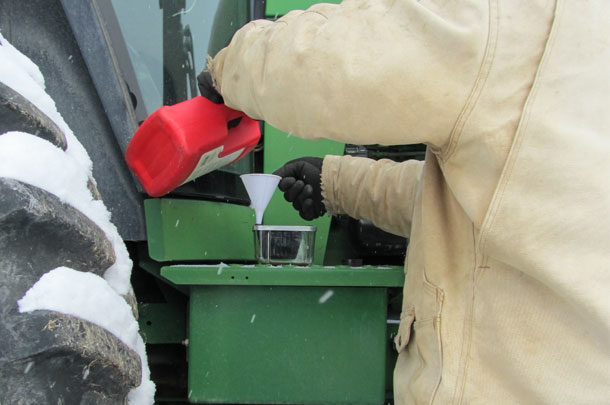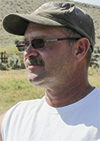Many of us have been caught off guard and gelled a fuel system during an unexpected subzero snap, or been forced to try and use a truck or piece of equipment that we had not expected to use in the winter and had not properly prepped for the cold.
Bruce Carpenter, who farms near Gooding, Idaho, and operates heavy trucks in the oil fields of North Dakota, says, “The best solution is prevention. It is a good idea to replace the fuel filters and water separators in anything that runs on diesel before the cold weather sets in, and treat the fuel with a good anti-gel supplement.
The leading names in diesel supplements are rated for year-round use, so don’t worry about adding it too early in the fall. If you expect to use a truck or tractor hard all winter, it’s a good idea to have spare filters on hand and change them every month or so.”
Carpenter recommends two supplements “that are trusted from farms across the Northern states to the oil fields of North Dakota: Howes and Power Service.” Add the recommended dose to the fuel tank. When in doubt about the number of gallons in the tank, it is better to overdose a system than underdose.
After adding the supplement, start the truck or piece of equipment and idle for 15 to 20 minutes. This will circulate the supplement through the entire system and allow for smooth operation when the cold weather arrives. Keep a supply of the anti-gel supplement of your choice on hand throughout the winter and augment that with a bottle of Power Service 9.1.1 for emergencies and extreme subzero conditions.

If you get caught with untreated fuel or have the misfortune of fuel taking on excessive moisture during a bad cold snap, there are a few simple steps you can perform to solve the problem. The most common problem occurs when the cold fuel passes through the filtration system. Moisture, contamination particles and the pressure created as the fuel is forced through the filters create the perfect environment for the fuel to gel.
Remove the fuel filter(s) and proceed to the next step with new filters. If new filters are not an option, pour out as much of the gelled fuel as you can. Next, fill the filters half full of Power Service 9.1.1 and top off with clean diesel fuel. Do not reuse the fuel that you poured out of the filters.
Carpenter says, “If you don’t have clean fuel handy, it’s better to fill the new filter completely full of anti-gel than reuse the old fuel. We always fill the new filters full of Howes when changing the filters on the trucks in North Dakota. If you have to reuse the old filter, check the condition of the filter and gelled fuel inside the filter. It’s a good idea to flush the filter once or twice with Power Service 9.1.1 before filling and reinstalling.”
Treat the fuel in the tank with a good maintenance anti-gel supplement and start the engine. Allow the engine to idle with no load for 15 to 20 minutes to circulate the supplement.
In most cases, the previously described process is all that is needed to put the truck or piece of equipment back into service, but if the engine continues to fail to start, you may have ice in the bottom of the fuel tank or fuel lines. If you suspect that you may have this problem, once again turn to the Power Service 9.1.1. Treat the fuel tank with the prescribed dose of Power Service 9.1.1, 96 ounces to 100 gallons of fuel.
Allow several hours for the supplement to remove the ice from the system before attempting to start the engine. When the ice has been removed from the tank or fuel lines, the engine will start. As in the previous situation, after starting the engine, allow it to idle for 15 to 20 minutes before attempting to load the engine. Once the fuel and supplement have circulated through the entire system, you are ready to return to normal operation. FG
Michael J. Thomas is a freelancer based in Idaho.
PHOTO 1: Michael Thomas fills the filter of his 4455 John Deere tractor on a -20°F day.
PHOTO 2: On the left is the fuel filter/water separator for a 4455 John Deere tractor, along with a bottle of Power Service 9.1.1 used to keep the engine running in cold weather. Photos provided by Michael J. Thomas.











